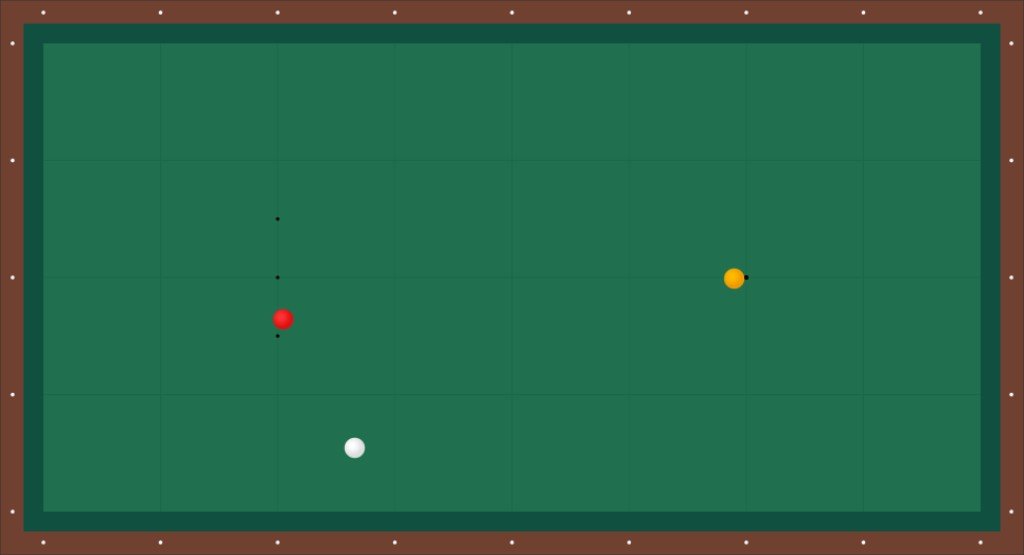Would we be better 3-cushion players if we had the precision of a neurosurgeon, the concentration of a ninja and a sledgehammer stroke? Probably. But unfortunately, you can't order those qualities from Amazon, and endless practice will get you just inches further on that road of miles.
So, if you are 0.500, will you forever be 0.500? Of course not. Many aspects of your game can be improved, and the most important one (by far), is choice of shot. The funny thing is, that you'll never hear a 3-cushion player say this out loud. They will admit to all sorts of weaknesses (I can't keep my focus, I can't adapt to different tables, I can't play early in the day), but nobody ever says: "I play the wrong shot rather often."
3-cushion players of the world, I don't mean to be disrespectful to you. But here's the ugly truth: You play the wrong shot, rather often.
I'm roughly in the 1.000 average bracket, so I should be able to see where the 0.500 players get it wrong. But logic dictates that the 1.500 guys will make choices that are very often superior to the ones I make. In a match I played last week, I had three nasty positions, where it was far from obvious to me which shot was the best. So it seemed like a good idea to let a few better players look at it.
I found two guys who can beat anybody, on their good days: Nikos Polychronopoulos, the current nr. 5 on the world ranking, and Roland Forthomme, winner of two World Cups and co-holder of the world record for high run (28). Why have they become world class? Because they never stopped learning. Nikos, twenty years ago, was a bit impatient and nervous, always looking for that intuition-based "flow" that made 3-cushion an easy game. Sometimes he found it, sometimes he didn't. He's a more mature player now, the quick decisions are still there but attention to detail is much better, and so is his mentality.
Roland needed a few years to come to terms with his life as a professional billiard player. Like Nikos, he was wildly talented but inconsistent in the late nineties, and he has found stability now. In matches that can't be won, he can put up a hard fight and lose with 1.300, when in the old days he would have lost with 0.800. And as we all know, how you lose says more about you than how you win. Without character, you are not even getting NEAR the world's elite top 14.
But Forthomme and Polychronopoulos are still two very different players. Nikos has a game that relies heavily on scoring when the chances are there. You don't often see him take a time-out and put a ton of energy into a desperately difficult shot. But he is extremely productive with balls in the open, and clever at breaking your defense. In a "good" match, where it's all about the runs, I'd take Nikos over Roland.
Roland's game, as I see it, also has a few rare qualities. He is very good at turning down a bad solution. He will NOT fall into the trap, he'll play a different shot that may look more difficult to the amateur eye, but it will have a better % chance. And he is one of the world's great problem solvers. You can see it in his body language sometimes. "I know this is a shot with a 3 % chance, BUT I CAN MAKE IT." That's Roland. In a "bad" match, where the balls just refuse to behave, I'd take Roland over Nikos.
Let's hear what they have to say about my problem positions, white always the cue ball.

Diagram 1.
Nikos: I would play off the right side of the yellow, short-long-short, with left hand english. There's a "good" corner, and I also have defensive value with that shot.
Roland: Right side of the yellow, maximum spin, short-long-short to the red, which is also the shot for position. But if I don't "feel" the table, I'll play a much thinner yellow, controlled speed and less english, same line but for defense.

Diagram 2.
Nikos: Left side of the red, with right hand english, short-long-short. It's a combination shot: try for the point but also defensive speed.
Roland: Best way to make is probably to draw it in from the right side of the yellow, short-long-short-long. If I feel I need to play defensive here, I'll play it "Jaspers" - style: left side of the red with left english, short-long-short. You'll beat the kiss that way, and if you miss, you should be long, not short.

Diagram 3.
Nikos: Again, you need to think about defense a little bit. I'll play left side of the yellow, four rails: short-long-short-long. Let the ball pick up a touch of running english along the way. You need half-ball contact at least, to make sure the yellow ends up down the table.
Roland: I'll play 5 rails off the left side of the yellow, short-long-short-long-short. Need to beat the kiss after three rails, need to control the speed for defense. This is an extremely difficult position.
Unsurprisingly, Roland and Nikos made better choices than I did, during the match. Thanks gentlemen. And just to state the obvious: the easier the position, the more attention the pro player will give to the next shot. The more difficult the position, the more prominent defensive thought becomes. It all makes sense.
